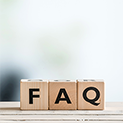Home-use test (HUT)
What is a home-use test?
A home-use test is a quantitative research method that observes a panel of users tries a new product or prototype for everyday use for a certain period. The users give an evaluation and their impressions of the product. CLTs (central location tests) require participants to test the product at a venue. In contrast, the home-use tests and mail surveys allow people to complete questionnaires from home.
Home-use test usage examples
Researchers can evaluate how products such as shampoo, detergent, and other daily necessities, cosmetics, beauty products, hair care products, beverages, food, pans or other cooking utensils, electrical appliances, and fashion items are used in real life and obtain feedback on users' impressions.
If the brand or manufacturer's name is not revealed, the test can eliminate branding bias. A survey that purely evaluates a product's capabilities can elucidate the appeal and potential of the product from the consumer's point of view. In addition, it aids the development of products to ensure that they are well-received by consumers.
Combining HUT with other research methods enhances the findings of a survey. For example, using a HUT after a preliminary concept evaluation via an internet survey will provide a client with a more comprehensive evaluation than would be possible from using a HUT on its own.
- [Fashion] Design evaluation survey for a new product
- [Hair Care] Trial survey for a styling product
- [Daily necessities] Trial survey of a deodorant
and many more uses.
Cross Marketing home-use test (HUT) features
Immediate collection of online responses.
Participants use a web survey screen to submit immediate responses.
One-stop solution for various offline surveys
We handle all the services on our end from sending and collecting samples to distributing questionnaires.
Using various recruitment methods to select the most suitable targets
We recruit survey respondents to match your criteria from the largest active survey panel in Japan. Clients can use their own panelists too.
Standard schedule and deliverables
Standard schedule
-
STEP.01
- Preliminary meeting/project planning and design (6 days+)
-
STEP.02
- Respondent recruitment (6 days+)
-
STEP.03
- Fieldwork (3–4 weeks)
-
STEP.04
- Delivery of raw data (3 days+)
-
STEP.05
- Delivery of report (5 days+)
Deliverables
- Basic:
- Raw data/simple summary sheet (GT table)
- Optional:
- Cross tabulation, report, presentation
Difference between a home-use test (HUT) and a mail survey
Mail survey
Similar to the home-use test, we also offer mail surveys in which people complete questionnaires from home. With this method, printed questionnaires are mailed to the target respondents who answer and then return them. The data received is tabulated and analyzed. To carry out a mail survey, you need to know the participants' addresses. This format is useful if the client does not know the email addresses of certain users. It is also helpful for participants who are not familiar with using the internet or for clients who want the respondents to provide regular responses in a diary format. It is cheaper than a CLT and can be used for large-scale surveys involving tens of thousands of samples.
Home-use test
Home-use testing is suitable for products where a proper assessment requires long-term use or testing the full potential of a product when used in a home environment. The trial product may or may not be retrieved at the end of the trial. Typically, not all the samples will be recovered because products may be lost or go missing in participants' homes. Paper-based questionnaires are possible, but it is generally cheaper and faster to collect responses online.
Related Contents
Q&A / FAQs on home-use test
-
Can I trust you to handle personal information properly?
We are accredited under the PrivacyMark system and have comprehensive measures in place to protect personal information.
Q&A / FAQs on home-use test
-
Can I trust you to handle personal information properly?
We are accredited under the PrivacyMark system and have comprehensive measures in place to protect personal information.





